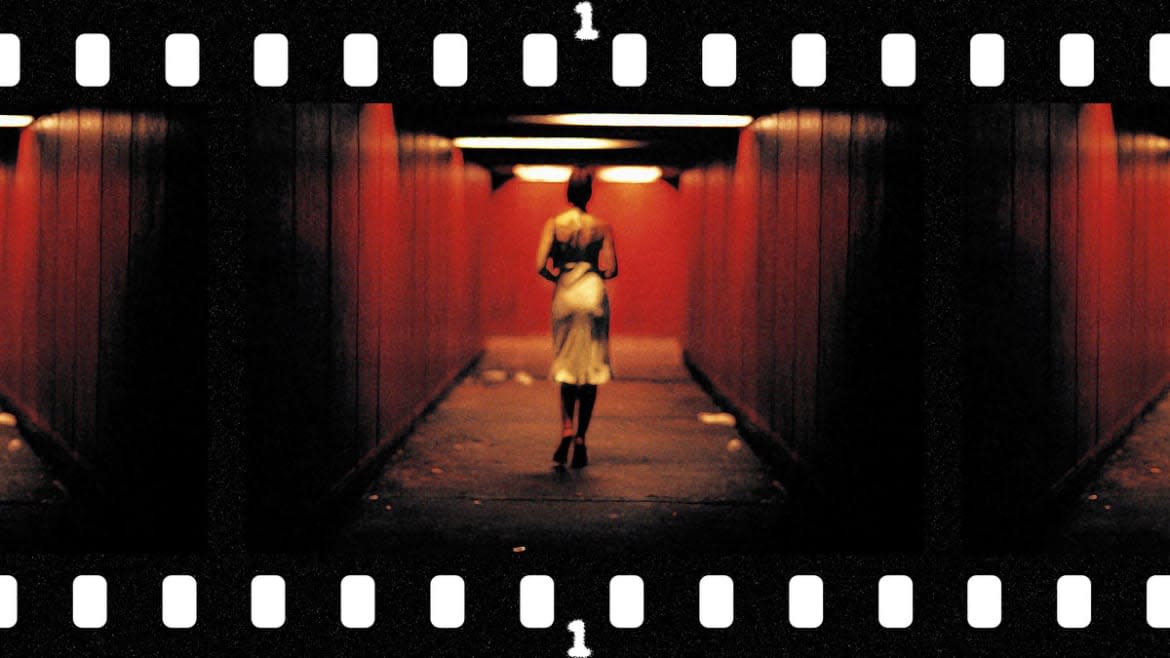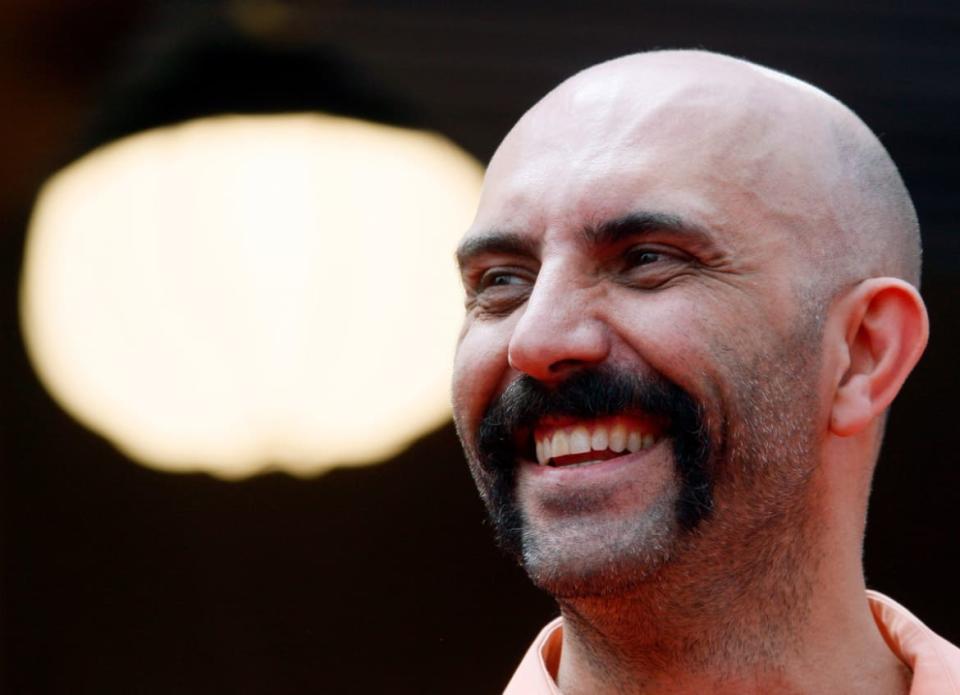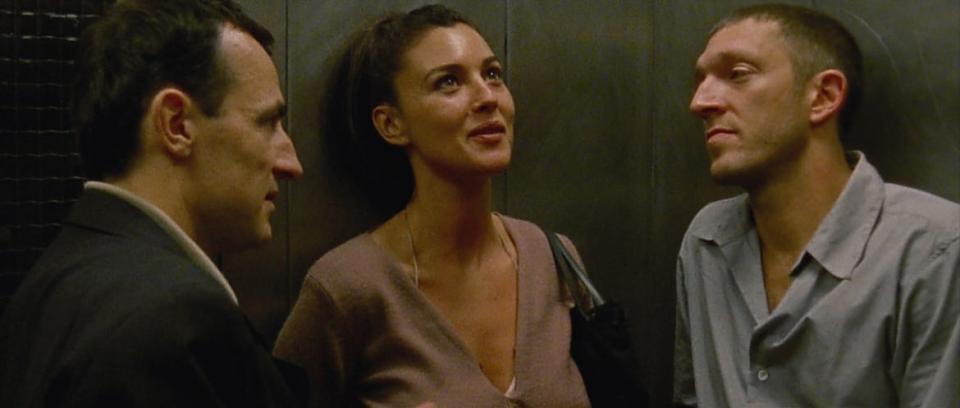‘Irreversible,’ the Most Upsetting Movie Ever Made, Just Got Even Darker

- Oops!Something went wrong.Please try again later.
- Oops!Something went wrong.Please try again later.
- Oops!Something went wrong.Please try again later.
It’s one of the most shocking scenes in cinema history: A woman named Alex (Monica Bellucci) walks through an underpass. While walking, she witnesses a man attacking another woman. The other woman manages to get away, but Alex is brutally attacked and raped by the man instead.
You’d expect a cutaway or the camera to focus elsewhere—anywhere but the horrifying action unfolding. But in director Gaspar Noé’s Irréversible, first released in 2002, the camera doesn’t move for nine horrifying minutes. It’s almost impossible to sit through, and re-watching it, I found myself begging for time to move faster, or for anything to stop what I was seeing from continuing. It’s mortifying, but it’s also key to the film’s impact. Irréversible refuses to cut away, exposing you to the absolute worst in humanity.
The film unsurprisingly was the subject of great controversy when it came out. It wasn’t just about the rape scene, either: There’s an incredibly graphic murder, and a barrage of ugly slurs are thrown around when Marcus (Vincent Cassel) storms his way through a gay bar to find the assailant. Irréversible is a brutal story all the way through—it’s Noé at his most fearlessly confrontational.
While some celebrated its shocking content and creative storytelling—the film unfolds in reverse chronological order—others were quick to denigrate it. Slate, for example, called Irréversible “the most homophobic movie ever made.”
Since making Irréversible, Noé has continued to push cinematic boundaries. 2009’s Enter the Void is an epic odyssey with a first-person perspective that made waves for including an internal sex shot (which is exactly what you’re thinking). Love, from 2015, featured multiple scenes of graphic, unsimulated sex (in 3D!), and Climax (2018) is a psychedelic horror, in which a group of dancers have their drinks spiked with LSD, resulting in absolute chaos.
But Irréversible has remained on Noé’s mind over the last two decades. Now, he’s brought his controversial film back with Irréversible: Straight Cut, in which the director has re-assembled the film into chronological order. The result is astonishing, managing to be even more emotionally devastating and difficult to sit through than the original. It’s an extremely challenging but worthwhile viewing experience: The film is still an astonishing exploration of humanity pushed to its limits, and it’s all but destined to stick in your mind for years.
The World’s Most Dangerous Director
Regularly dubbed cinema’s enfant terrible, Noé speaks gently but passionately—hardly what you’d expect from a man whose films shock so many. Ahead of Irréversible: Straight Cut’s first American theatrical release this weekend, we spoke over Zoom about what prompted Noé to redo the oft-maligned film (which he was quick to point out that is “not a director’s cut; it’s a director’s re-cut”) and the immense controversy that surrounds this (and all) his work.
I think part of the reason I’m drawn to your work is how you seem like a natural provocateur—there’s a thrill in seeing what you come up with next.
That said, most people tend to have extremely strong, often negative reactions to your work. Do you think telling Irréversible’s story in reverse chronological order contributed to its critical response?
When we got the financing for this movie with famous French actors, it was mostly on their names, and not so much on the storyline. But the producer said, “Do you have any idea for a movie with Monica Bellucci and Vincent Cassel?” I said yeah, I have this rape and revenge story, but we’re gonna tell it backwards. I thought it would be interesting to start at the end, like in a tragedy, in which you know how things are going to finish, but you don’t know how the events unfolded, so then you go back in time.
In the case of the original cut, we shot it chronologically, but we edited in reverse. The peaceful day before the drama appears at the end of the movie, and you have a kind of happy ending, or at least a melancholic ending. Which is not the case in the new chronological cut, in which things get worse and worse every minute, and it’s a direct trip to hell.
What compelled you to re-cut the film to unfold in chronological order?
When I first showed the original cut to my producers, they knew that I wanted to show things backwards. But they said, “Why don’t you try to see how it feels like to have them in chronological order?”
But the scenes were put in one order [in the edit], and it was very difficult to do two versions. I wanted my version [to be the one we released], which was the anti-chronological one. So, it was shown in Cannes competition, made a scandal, whatever.
But one day, I received a DVD from Korea, and in Korea, they added as a bonus… a very badly edited [version of the film] in chronological order. And they didn’t even ask for my permission! And I started watching it, but it was very badly done. So I said well, someone should do it, but it should be done properly. And that was 20 years ago.

Gaspar Noé.
Two years ago, the owners of the rights to the movie called me to see if I wanted to supervise the remastering of the movie in digital DCP for Blu-ray. Of course, I want to make sure that for the future world, the movie is transferred in the best condition, so I checked all the color grading and the sound, etc.
But then, as I was editing my other movie [2021’s Vortex], I had my editors in my editing room, and I said, “Why don’t we just try now to edit Irréversible properly in order?” Then I proposed to Studiocanal, the owners of the movie, to make an alternative version as an extra for the Blu-ray. It took me only one week to do [the re-cut], but I thought it was so strong that I decided I wanted to show it at a big film festival like Cannes or Venice, and it went to Venice, and I wanted it to have a theatrical release.
What do you feel the differences between the original and the straight cut are?
With all the scenes in the right order, the puzzling, artsy effect of the previous version totally disappeared, and the story is pursued in a much more emotional way. It’s more like an actor’s movie now, because you understand the characters [better], and you also understand how bad things are going, and understand their behavior more—especially in the case of the character played by Vincent Cassel. He behaves like a bonobo monkey during the whole movie. In the original version, it seemed that he was heroic, but in this one, he is totally anti-heroic. It’s actually the other friend [played by Albert Dupontel] who’s heroic.
Also, because the new version starts with Monica Bellucci, and you’re following her for 50 minutes, she becomes the main character in the movie. You get attached to her, and her performance is even more noticeable. Lots of people told me that the worst thing about this cut is that you don't perceive the characters the same way, but also that it’s much more sentimental and much crueler than the original version. Things get worse and worse until the last image.
In ‘Vortex,’ a Provocative Director Explores the Horrors of Old Age
It’s impossible to talk about Irréversible without talking about the pivotal rape sequence. Can you talk about shooting the scene, and how you worked with the actors in the moment?
We shot the movie in six weeks in chronological order, so we shot that scene after the party scene, in which Monica Bellucci leaves the party, and then she has to go through an underground tunnel to get a cab on the other side of the avenue. The whole script, when we started shooting, was a synopsis of three pages, and there were 12 scenes. It would say something like, “The girl is going through the tunnel and there’s a man fighting with a woman on the other end.” I did not write any dialogue for that scene or any other ones. We had two days to shoot it, and I told them that… even though all the sexual violence is totally simulated, they were gonna be exhausted, because it’s an intense scene to portray.
We shot it three times on the first day, three times on the second day. I told [Bellucci and Jo Prestia, who plays the aggressor] what we should do is just give it a pace and length that seems real. I don’t like movies in which people have intercourse that lasts 15 seconds, because in real life, it never takes 15 seconds, so I wanted them to find their own timing. Let’s make it as brutal as it can be portrayed.
But between takes, the two actors, Monica and Jo Prestia, were laughing. They were watching the material, and they would say, “Oh, people are going to scream in the theater! It’s funny, it looks so real!” But that’s the magic of doing movies. It’s like pulling a rabbit out of the hat, and people really believe it’s real.
That’s so wild to think about, since I spent most of the time watching constantly reassuring myself that it wasn’t real to get through it!
At the end of that scene, you briefly see the genitals of the aggressor. Those were [initially not in the shot], because the zip of his pants was closed, and then when he moved back, I said, “Shit!” Because it doesn’t look real, because his zip is closed. So we added the genitals digitally, so that it looks more real.

How do you think the Straight Cut will be perceived in 2023? Do you anticipate a stronger reaction now than when the original version of the film was released?
The movie is being released now in the States, but it was already released two years ago in France, Japan, Russia, and other countries. So I already know how people react to the movie. [The reaction was largely the same, with a mix of the very positive and very negative.]
What’s really changed [people’s perception of the movie] is all the things that happened in the last five years. With the #MeToo movement, people speak very loudly about sexual aggression and sexual abuse. And on the other side [as a filmmaker], it is more difficult nowadays to portray those kinds of scenes.
It seems kind of weird that this movie is coming out now, because it was shot 20 years ago, and it was already a daring way to portray it at the time. But now, it seems even more daring, because no one would get the financing to portray such a scene in that way now.
Do you think about Irréversible differently to how you did in 2002?
Irréversible was just one movie. Now it’s like, I have the feeling that without noticing it, I had given birth to two babies. One was the boy, or that I recognized as my baby. And then 20 years later, I find out that actually, there was a twin sister that is very similar but also the opposite of the brother. And so now there are two siblings in the world.
You have the original movie, which is the director’s cut that is conceptual or experimental, and this one is much more clear. I like the fact that I created such a movie with two sides, because I don’t know any other movie that ever played that game, and I don’t even know any novel that can be read in both senses.
‘Climax’: Gaspar Noe’s Freaky, Sexy Dance Party Will Blow Your Fucking Mind
You’ve alluded to this already, but the culture has shifted so much since Irréversible first came out, and there’s a lot more caution around the idea of being “problematic” and offending people.
The characters, when they get angry, particularly Cassel’s, become homophobic, do racist things, anti-feminist things. All the things that people are worried about nowadays are all in the same movie. Also, they’re not just said and done by the evil characters. They’re coming from the in main characters. They’re not good or bad, but they’re just human.
Does the culture shift in recent years encourage you to go further against the grain and push boundaries more? Or does it give you pause to reconsider what stories you tell and how you tell them?
I’m not gonna do another movie of this kind in the near future or in the far future… I’d rather move to something else, but I don’t know yet what’s going to be my next project. I like making movies that are R-rated or NC-17, because only adult people can see these movies. If I see a movie that has a NC-17 rating, or the equivalent in France, I say, “Oh, this must be a good movie, because it certainly shows things that are shocking for most viewers.”
Irréversible is formally impressive regardless of the way things are ordered, and the long takes play a big part in that. Why did you decide to film most of the film with long takes? Were there challenges that came with that?
On the one hand, I thought it would be easier to direct the actors by doing long takes, because once you start the rehearsals… and then you start shooting for real, there’s a collective energy that works very well. It makes things go faster. If you have to do one close-up, then the reverse close-up, then another shot, you’re stopping the energy all the time, and you’re fragmenting the real-time into small capsules that actually take much, much longer.
Also, the editing process becomes much longer, because you over-edit or over-cover the scene. Since I had to shoot the whole movie in six weeks, I thought doing every scene in one long take would be easier.
‘Love’ Star Karl Glusman on Heartbreak and the Art of the Orgasm
After working on the Straight Cut, are there any other of your films that you’d like to revisit?
Some people tell me I should do a 3D version of Enter the Void, but it would take so much work.
I’m gonna start the restoration of Carne and I Stand Alone, my first movies. I’m gonna do a nice clean print with those movies, and it will be a way of revisiting my first features—but without adding anything in particular.
Get the Daily Beast's biggest scoops and scandals delivered right to your inbox. Sign up now.
Stay informed and gain unlimited access to the Daily Beast's unmatched reporting. Subscribe now.

